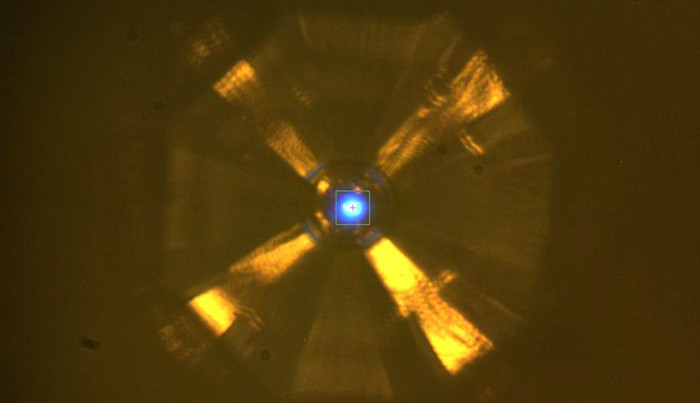Superconductivity at –23 degrees Celsius?
June 03, 2019
on
on

Researchers at the University of Chicago have managed to beat the previous world record for high-temperature superconductivity (HTSC) by 50K. This new material reaches superconductivity at –23 °C (under very high pressure conditions).
Even though the material needs to be under extreme pressure at this temperature for superconductivity to occur, Vitali Prakapenka and Eran Greenberg of the ANL (Argonne National Laboratory) see this as a significant step towards superconductivity at room temperature.
The previous world record is –73 °C but this material is not ductile and cannot therefore be drawn into flexible wires to make windings for electric motors or electromagnets. At the moment this is also not possible with this latest superconducting compound, but the researchers hope that practical use could be made possible in the future. Practical superconducting materials in use today only work at –240 °C.

Crystal structure of the Lanthanum super hydride compound. Image: Drozdov et al. / uchicago.edu.
The big kicker is that the compound is only superconducting at –23 °C under a pressure between 150 and 170 gigapascals which works out at around one a half million atmospheres. The test sample is only a few micrometers in size. They used the Advanced Photon Source facility at Argonne National Laboratory to shed light on the material structure. The sample was compressed between two diamonds. Based on the data collected, the researchers were able to determine a model of the crystal structure.
Even though the material needs to be under extreme pressure at this temperature for superconductivity to occur, Vitali Prakapenka and Eran Greenberg of the ANL (Argonne National Laboratory) see this as a significant step towards superconductivity at room temperature.
Superconductivity and energy saving
The use of Superconducting electrical conductors which do not need such extremely low temperatures to become effective would allow the design of a new generation of super-efficient wind turbines and slash costs for other applications such as maglev trains, MRI scanners and particle accelerators. Keeping these superconductors at their superconducting temperature uses so much energy that the practical application is almost always uneconomical.The previous world record is –73 °C but this material is not ductile and cannot therefore be drawn into flexible wires to make windings for electric motors or electromagnets. At the moment this is also not possible with this latest superconducting compound, but the researchers hope that practical use could be made possible in the future. Practical superconducting materials in use today only work at –240 °C.

Crystal structure of the Lanthanum super hydride compound. Image: Drozdov et al. / uchicago.edu.
Lanthanum super hydride
The researchers together with colleagues from the Max Planck Institute for Chemistry, experimented with different hydrides (compounds with hydrogen bonded to other elements) and found that lanthanum superhydride is a suitable candidate. Lanthanum belongs to the so-called rare earths.The big kicker is that the compound is only superconducting at –23 °C under a pressure between 150 and 170 gigapascals which works out at around one a half million atmospheres. The test sample is only a few micrometers in size. They used the Advanced Photon Source facility at Argonne National Laboratory to shed light on the material structure. The sample was compressed between two diamonds. Based on the data collected, the researchers were able to determine a model of the crystal structure.
Read full article
Hide full article


Discussion (0 comments)